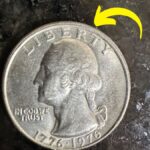The Lincoln Wheat Penny is one of the most well-known and valuable coins in American history. While most of these coins are worth just a few cents, some rare versions are valued at an astonishing $1 million. What makes these pennies so special, and could you have one in your pocket change?
History of the Lincoln Wheat Penny
The Lincoln Wheat Penny was first introduced in 1909 to celebrate the 100th birthday of President Abraham Lincoln. It was designed by Victor David Brenner and became the first U.S. coin to feature a real historical figure. The front (obverse) of the coin features Lincoln’s portrait, while the back (reverse) displays two stalks of wheat, giving it the name “Wheat Penny.”
Why Is This Penny Worth $1 Million?
Most Lincoln Wheat Pennies are common, but a few rare versions are extremely valuable. The most expensive ones include:
- 1943 Copper Lincoln Wheat Penny – In 1943, pennies were made from steel instead of copper due to World War II metal shortages. However, a few copper pennies were mistakenly produced, making them highly valuable.
- 1909-S VDB Penny – This penny, made in San Francisco, features the initials “VDB” (for designer Victor David Brenner). Only a limited number were made, increasing its value.
- 1955 Double Die Penny – This error coin has a doubling effect on the lettering, making it one of the most famous error coins.
Among these, the 1943 Copper Lincoln Wheat Penny is the most valuable, with some selling for over $1 million at auctions.
How Did These Rare Pennies Enter Circulation?
The rare 1943 Copper Pennies were not intentionally made. Experts believe that leftover copper blanks from 1942 were accidentally used in the 1943 production run. These pennies were mixed in with millions of regular steel pennies and unknowingly entered circulation. Some may still be out there, waiting to be found.
How to Identify a Rare Lincoln Wheat Penny
If you want to check if you have a valuable Lincoln Wheat Penny, follow these steps:
- Date and Metal Type – The 1943 penny should be steel, not copper. If you find a 1943 penny that looks copper, it could be rare.
- Magnet Test – Steel pennies will stick to a magnet, while copper ones won’t. If your 1943 penny does not stick to a magnet, it might be valuable.
- Mint Mark – Look for an “S” (San Francisco) or “D” (Denver) mint mark, as these versions can be rarer.
- Lettering Errors – Some valuable Wheat Pennies, like the 1955 Double Die Penny, have doubled or misaligned letters.
Could This Penny Still Be in Circulation?
Yes! Over the years, rare Lincoln Wheat Pennies have been discovered in everyday transactions, in old piggy banks, and even in change from stores. Many people overlook pennies, so a valuable coin could still be out there, waiting to be found.
Where to Sell a Rare Lincoln Wheat Penny
If you think you have a valuable Lincoln Wheat Penny, follow these steps:
- Verify Authenticity – Take your coin to a professional coin dealer or grading service, such as PCGS or NGC.
- Check Auction Houses – Auctions like Heritage Auctions and Stack’s Bowers specialize in rare coins.
- Consult Online Coin Dealers – Websites like eBay and Coin World offer platforms for selling rare coins.
Conclusion
The idea that a Lincoln Wheat Penny worth $1 million could still be in circulation excites collectors and everyday people alike. If you find an old Wheat Penny, take a closer look—you might be holding a hidden treasure. Keep checking your coins because you never know—you might be the next lucky person to discover a million-dollar penny!
Disclaimer: The prices mentioned for rare coins, including the Lincoln Wheat Penny, are not guaranteed and may not be entirely accurate due to market fluctuations and varying appraisals.




